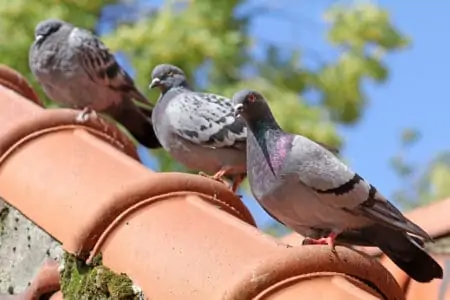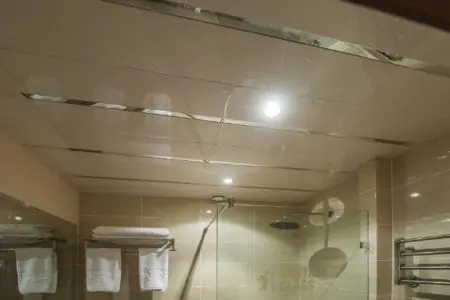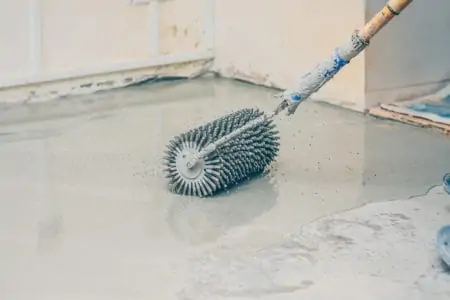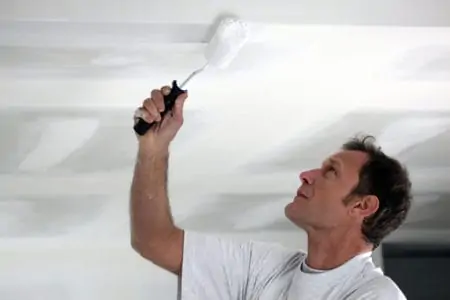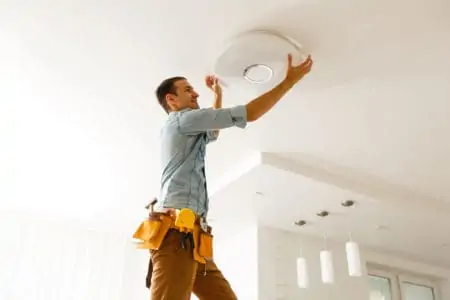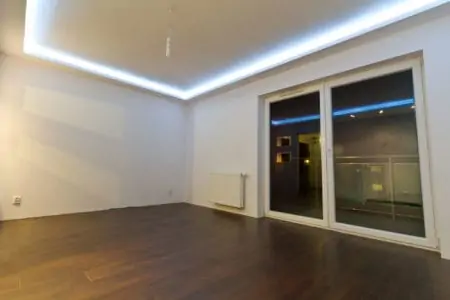Is your roof full of bird droppings from pigeons you can’t get rid of? Pigeons may be cute, but they are messy and disease-ridden. And they’re not exactly the friendliest thing to have around.
Learn how to get rid of pigeons on the roof with my simple methods.
Key Takeaways
- Understand why pigeons are on your roof: food sources, nesting in gutters, or nesting in the attic.
- Make your roof unappealing: use prevention methods like eliminating food sources, removing bird baths, and blocking solar panel access.
- Exclude pigeons from your property: use spikes, sealed entrances, nets, and chimney caps to keep them out.
- Repel pigeons with deterrents and repellents: try scare-pigeons, reflective surfaces, ultrasound devices, or repellent gel to keep them away.
Why Do Pigeons Sit on My Roof?
Pigeons are not considered a common pest that homeowners or apartment owners must deal with. These birds appear to be more frequently sighted roaming around in crowded city streets or parking garages than camping out at someone’s home.
However, there are times when your roof may be the ideal location for a bunch of pigeons to establish a home.
If you want to learn how to keep pigeons off the roof, you’ll first have to understand why they are there in the first place.
Food Sources
Pigeons cannot flourish in the absence of food. If your roof overlooks a reliable source of food for them, there’s a strong possibility they’ll make a habit of camping out there regularly.
Their focal point may be a restaurant, a bakery, a grocery store, or even your neighbor’s garden.
The only method to keep these pigeons away from your property is to destroy their source of attraction. Unfortunately, it may be impossible to accomplish because that is certainly beyond your control.
Nesting in Gutters
Pigeons may also find an ideal nesting site in your gutters. They frequently seek sunny areas that are predator-free but still have access to food or water. The curved design of your gutters provides an ideal location for a nest that will not be easily disturbed.
They keep a watch on nearby predators and food or water sources. Plus, any other threats that may come their way from their position in your gutters. While this is ideal for the pigeons, it can fully clog your gutters and cause them to back up during a hard rain.
Extra Tip
Consider installing gutter guards like these LeafTek Gutter Guards.
Nesting in Attic
Another reason you may have pigeons on your roof is that they have discovered a way into your attic. This may be very difficult to manage, as they can quickly take over an attic space if left alone. If you notice any pigeons on the roof, immediately inspect your attic.
If you happen to discover even one pigeon during your examination, immediately contact a pest control professional. Pigeons may wreak havoc in your attic, leaving feathers, nesting materials, and their droppings behind.
This can result in the entry of additional rats or insects or even injury to your household or pets. After the pigeons have been removed, the pest control firm will need to carefully clean out your attic. This is to ensure that all traces of the pigeon infestation are eliminated.
Is It Bad to Have Pigeons on Your Roof?
The majority of homeowners are unconcerned about a few birds perched on their roofs. But they should be when it comes to these “flying rats.” Pigeons can be a terrible nuisance, wreaking havoc on your roof with their nests and droppings.
They Block Water
The nests of these birds are found in rain gutters and roof drains. When it rains, these nests operate as dams, preventing water from escaping your roof and accumulating water, waste, and debris.
Extreme examples of this problem can result in roof collapses because the constant buildup of water and dirt increases the roof’s weight. Pooled water is also detrimental to the structural stability of your roof.
They Make a Mess
Anyone who has left their car in a public space and returned hours later to find it in a state of disarray understands what this implies. Pigeons, if left unchecked, will not only wreak havoc on your roof but also on your yard, vegetation, and cars parked in the driveway.
They Damage the Roof
Pigeon droppings are inherently acidic, as are most bird droppings. Indeed, their acid concentration is so high that it can corrode many roofing components. But most notably, the underlayment of your roof.
If these droppings are allowed to build on the roof, they will contribute to the roof’s wear and tear.
How to Get Rid of Pigeons on the Roof Naturally
This section will show you how to remove pigeons from rooftops and keep them at bay without hurting them.
Prevention Methods
Not a fan of outright killing them? Here’s a way to prevent them from wanting to stick around.
1. Eliminate Food Sources
There are times when a pigeon infestation will not go away despite your best efforts at pigeon deterrent. If there is food on the premises, pigeons will continue to come back regardless of deterrents and repellents.
Pigeons will show up on your property if they spot fruit, beans, grains, or seeds. If you have full trash bins around the house, pigeons will also be attracted to those.
Keep an eye on the pigeons in your neighborhood. Are they gathered around particular trees or bushes? Are they nibbling at something on the ground?
Do they congregate near the trash? By devoting a few minutes each day to monitoring their habits, you can learn a great deal about how to get rid of them.
Install chicken wire over any gardens you might have. Buy or build a wooden box to house your trash bins.
Pros
- Might be the most effective method.
- Doesn’t cost money or resources.
Cons
- This may sometimes be out of your control.
2. Remove Bird Baths
Although pigeons are not very fond of water, they do appreciate a thorough bath. They do so to keep their feathers healthy and cool down on hot days.
However, once a flock of pigeons has invaded your birdbath, you can be certain they will bully other birds away. This allows them to use it exclusively.
In this scenario, the birdbath should be drained. These merely serve to increase the pests’ attraction to your property.
Consistency is critical in this case, so ensure that it remains empty by removing water after it rains. Additionally, look around your home for anything that could be used as a birdbath.
Pros
- Doesn’t consume resources.
- Doesn’t harm pigeons.
Cons
- You have to empty the water consistently.
3. Block Solar Panel Access
Pigeons might nest under solar panels. Netting prevents pigeons from accessing the panel system and hence protects the entire roof from bird infestation.
Eliminate any obvious sources of food for the pigeons. Store pet food properly, invest in pigeon-proof bird feeders and keep rubbish in firmly sealed containers.
While this may not eliminate pigeons from your solar panels, it will reduce their attraction to the region.
Also, ensure that your solar panels are maintained. Pigeons are more prone to roost in cracked or compromised panels. Maintain your panels in good condition and get them repaired if they begin to show symptoms of wear.
Pros
- Can easily discourage pigeons.
- Netting will not impact solar panel effectiveness.
Cons
- Netting is time-consuming to hang.
4. Buy Pigeon-Proof Bird Feeders
If you want to get rid of pigeons but not other birds, consider investing in bird feeders that are pigeon-proof. This way, you can keep food sources for other feather-winged friends while keeping pigeons away from the food source.
I’d recommend this Roamwild Pestoff Bird Feeder.
Pros
- Non-harmful method.
- Still feeds other birds.
Cons
- Relentless pigeons might still try to find a way.
Exclusion Methods
Prevention methods didn’t work? Try making the environment so hostile they won’t want to roost.
5. Spikes
If you want to prevent pigeons from roosting on your ledges, anti-roosting spikes are an excellent alternative. By eliminating spaces where they can sit, you make your home a less desirable hangout spot for pigeons.
However, they will learn to avoid areas with spikes. When it is laid along horizontal surfaces beneath a roof or against another wall, birds may utilize it to build nests. As a result, pigeon spikes work best when set on ledges that face the sky.
Pros
- Plenty of kit options available.
- There are multiple mounting methods.
Cons
- They may learn to avoid the spikes eventually.
6. Sealed Entrances
Pigeons prefer to nest in nooks and crannies that protect them from the sun, cold, and predators. Take a tour around your neighborhood to identify areas that pigeons would enjoy. Preventing access to these sites is an effective method of eradicating pigeons.
There are numerous ways to accomplish this, with goods accessible in most home improvement and hardware stores.
Fill in tiny openings with silicone caulk. Cover vent holes with caps. If you wish to cover a larger area, use hardware cloth. Bird or pigeon netting can be put around the space above the rafters to keep them out.
Pros
- Doesn’t harm the pigeons.
Cons
- Can be time-consuming.
7. Nets
There is no need for pigeon eradication or other destructive techniques of eradicating these birds. You just have to keep them from landing on your plants in the first place–which is the purpose of pigeon netting.
This is the most effective pigeon deterrent available and will safeguard the hard work you’ve invested in your garden. It is preferable to mount it on thin rods rather than big wood planks, as it can serve as a roosting location.
Pros
- Doesn’t harm the pigeons.
- Keeps other birds away.
Cons
- Time-consuming installation process.
8. Chimney Caps
The chimney warrants special mention because it is one of the most bird-friendly areas of a house. They prefer to roost and nest in this region, making it difficult for humans to remove them. Before capping your chimney, check to ensure no birds are trapped inside.
Once you’re convinced that your chimney is free of birds or nests, you can cap it. There are numerous chimney caps available that will complement any home’s style.
Keep in mind that caps with smaller mesh holes are more successful at keeping animals out. But they also require more upkeep. As ash, soot, and creosote may quickly fill these holes, you will need to check it periodically to ensure it remains clear.
Pros
- Prevents nesting.
- Prolongs the lifespan of your chimney.
Cons
- Small mesh holes require more upkeep.
Deterrents
Now we’ve moved into outright scaring them away.
9. Scare-pigeons
Much like a scarecrow, you can turn to deterrents that scare pigeons away. Keeping pigeons away requires a scare-pigeon that is as lifelike as possible. It’s better to purchase a three-dimensional, life-size one that exhibits erratic movement or produces predator sounds.
However, regardless of how authentic it appears and acts, pigeons will ultimately figure out the joke if it remains stationary. Distribute scare-pigeons across the area to fool the birds into believing they are genuine. Also, a predator with sound effects might be more lifelike.
Pros
- Doesn’t harm pigeons.
- Can be installed in multiple places.
Cons
- Smart pigeons might realize it’s a fake.
10. Reflective Surfaces
If you’re looking for a cheap way to get rid of birds around your property, simply install items that reflect light. Birds dislike intense flashes of light in general. Birds’ eyes react to the prism effect, causing them to become disoriented.
This Kugge Bird Flash Tape is a great option and easy to use.
The good news is that this approach can be found in a wide variety of items found around your home or on sale at your neighborhood department store. Some common possibilities include old CDs, aluminum foil, miniature mirrors, and reflective tape.
Pros
- You have plenty of product options.
- You likely have them around the house.
Cons
- They can be inaesthetic.
11. Weatherproof String
Another approach to stopping pigeons from roosting near your property without harming them is to use a waterproof string. These tiny, nearly undetectable strings are stretched taut over preferred perching locations.
Birds will swoop in to perch on the ledge from your house. But as they clutch the ledge with their claws, they will be taken aback by an unexpected surprise. They become disoriented as a result of something they cannot see and become hesitant about roosting in that location.
Pros
- Cost-effective method.
- Doesn’t hurt the pigeons.
Cons
- Requires constant checking to make sure it’s tight.
Repellents
All of the methods above are meant to deter and exclude. But the next few should repel the pests altogether.
12. Ultrasound Devices
Birds have an exceptional sense of hearing, enabling them to notice sounds that human ears cannot. They must have an acute hearing to hear the calls of other birds.
This assists them in detecting food, potential mating partners, and danger. Utilize this to your advantage and use sound to drive pigeons away.
Other types of pigeon control devices that use sound to drive pigeons away use frequencies that only these birds can hear. It is at a frequency that is below what human ears can perceive yet is annoying to pigeons.
Bear in mind that methods of pigeon control based on sound may not function immediately. Consistency is critical. Leave it on for several hours each day and for several weeks.
This will ensure that any pigeon that enters your home hears the sounds. It will develop an association with your home as a source of risk.
Pros
- They won’t harm the pigeons.
- They have a wide radius.
Cons
- They require consistent effort.
13. Repellent Gel
If you’re stumped as to how to get rid of pigeons on your roof, keep in mind that you’ll need to make it less appealing to them. This can be accomplished by rendering their roosting locations uninhabitable with pigeon repellent gel.
I recommend going with a trusted brand like this Bird-Be-Gone Repellent.
Don’t use this to repel pigeons on your balcony or window sills, railings, or landings that people touch. Bird repellent gel is extremely sticky and difficult to remove.
This is a safe method of removing pigeons without harming them. However, following directions precisely is critical. Avoid extensively distributing the gel across the entire surface since birds can become trapped and injure themselves.
Pros
- Doesn’t harm pigeons.
- Is easy to apply.
Cons
- Shouldn’t be placed on spots you can touch.
14. Motion-Activated Sprinklers
Consider utilizing a motion-activated sprayer to eliminate pigeons from your yard and prevent poop from showering down on your garden. Unexpected water sprays are one of the most gentle and non-toxic methods of removing pigeons.
Pros
- Harmless method.
- Also keeps the lawn hydrated.
Cons
- Might over-wet your yard.
15. Trap and Release
Consider catching obnoxious birds and releasing them at a safe distance. Take note that this may not be the most effective method of eradicating pigeons because they will come back. To be successful, it will require a long journey away from home.
Put bird feed inside for at least seven days and let birds come and go as they choose. Birds will continue to flock in as they learn easily-accessible food and water are available. This will reassure the flock that the environment is secure.
If you don’t want to buy one, you can make a catch and release cage yourself.
Pros
- Doesn’t harm the birds.
- They still get some food.
Cons
- You have to repeat this to infinity (and beyond).
16. Tensioned Wire with Low Voltage
Many pest control companies can install tensioned wire with a low voltage to solve your pigeon problem. So when a pigeon, or any bird, comes in contact with it, they get a tiny shock. Not enough to hurt them, but enough to deter the pests from sticking around.
You can install them on parapets, gutters, and even narrow ledges. The system comprises the tensioned, braided steel wire held in place with metal poles.
Pros
- Effective.
- Easy to install.
- Minimal obstruction to exterior design.
Cons
- Not eco-friendly.
17. Mesh and Expanding Foam
Another easy system to block birds out is using mesh and waterproof expanding foam. Mesh is installed inside any gaps between the roof and exterior walls or peaks created under extended roofing. Then the expanding foam is sprayed into the gaps and allowed to expand to block off any gaps.
It prevents the birds from pecking their way in and nesting. Once put in place, you can cut and trim the dried foam to be more discreet. You can even paint it to match your exterior.
Take Note
Expanding foam can leave a stain on your paintwork.
Pros
- Discreet.
- Easy to install.
- Safe for birds.
Cons
- Can stain paintwork.
- Doesn’t keep out pests like squirrels.
When Should I Call Pest Control?
Have your DIY tactics for removing pigeons been unsuccessful? Or maybe you simply prefer a more aggressive approach?
Then it’s time to contact a pest control expert. Other situations where you might want to call in extermination services for professional help:
- You’re sick because of pigeons.
- You have limited mobility and can’t do much to get rid of them.
- You don’t want to invest time in installing deterrents.
- You want a fast solution to the problem.
FAQs
We’ve gone over quite a bit of info and great tips. But these frequently asked questions can lend even more advice.
Bottom Line
There are several harmless methods for anyone looking to learn how to get rid of pigeons on the roof. Some of them require more time and effort on your behalf but could also be more efficient in the end.
Remember that if everything else fails, there are always professional pest control services to help you out.
